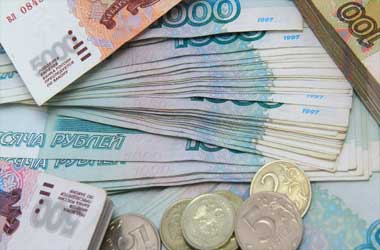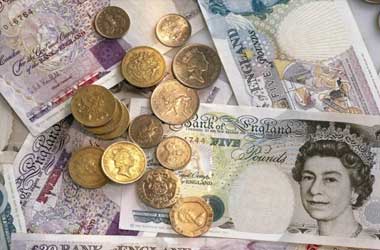 The Russian ruble plummeted to historical lows on February 28, 2022, and residents of the country started withdrawing cash, leading to what is referred to as a ‘bank run.’ During that period, Russia was slapped with a plethora of financial sanctions from nations who were against the Russian invasion of Ukraine. Additionally, the US, the European Commission, and Western countries slapped prohibitions on Bank of Russia’s assets worldwide.
The Russian ruble plummeted to historical lows on February 28, 2022, and residents of the country started withdrawing cash, leading to what is referred to as a ‘bank run.’ During that period, Russia was slapped with a plethora of financial sanctions from nations who were against the Russian invasion of Ukraine. Additionally, the US, the European Commission, and Western countries slapped prohibitions on Bank of Russia’s assets worldwide.
Nevertheless, in the second week of April, the Bank of Russia slashed the benchmark rates and pegged its currency to gold. In particular, the central bank pegged 5,000 rubles to a gram of gold. The country also announced a list of ‘unfriendly’ countries, and asked them to settle gas purchases in rubles. Several global buyers are adhering to the guidelines and purchasing gas using rubles as mode of payment. Furthermore, the Bank of Russia also trimmed the country’s benchmark interest rate as well.
In the same week in April, the ruble bounced back to pre-conflict levels and the fiat currency has demonstrated robustness from then on. In the past few months, several reports from Western media houses have indicated that the Russian ruble is the best fiat currency in terms of performance. In this regard, Jeffrey Frankel, a professor of capital formation and growth at the Harvard Kennedy School, has pointed out that “it’s an extraordinary scenario” with respect to the ruble’s appreciation. The ruble has posted historical highs versus the eurozone’s euro and the greenback.
Notably, Tatiana Orlova, the chief emerging markets economist at Oxford Economics, has pointed out that the rise in commodity prices is linked to the ruble’s sturdiness.
Orlova detailed that “the prices of commodities are quite high at the moment. This means that even if there has been a decline in the number of Russian exports as a result of economic sanctions, the rise in the prices of commodities more than balances for such declines.”
Orlova also pointed out the huge gap between exports and imports in Russia. The Oxford economics further stated “It’s an interesting coincidence that, at the same time as imports have dropped, exports have skyrocketed.”
Orlova also spoke about the capital controls enforced by the central bank of Russia and the manner in which overseas holders of stocks and bonds cannot realize dividends globally. The Oxford economist finished by stating that “This used to be a rather primary component of outflows for money from Russia, but since that route has been stopped, it is no longer an option.”
The central bank of Russia opted for another steep benchmark rate cut on Friday as lawmakers changed its emphasis on backing economic growth after inflation fell amid increasing strength of the ruble. Specifically, the central bank board’s directors opted to cut interest rate by 150 basis points to 9.50%, a level recorded before the start of the Ukraine-Russia conflict.
Soon after the Russia-Ukraine conflict began, the central bank raised its benchmark interest rate steeply to 20%, from 9.50%. In the next few months, the bank trimmed the rate by 1050 basis points in total. The objective of the central bank has moved rapidly from avoiding financial stability and inflation threat from taking control to backing the economic rebound and lending, as per Liam Peach, a well-known economist at Capital Economics.
Additional cuts are expected to be slow from the current level, but benchmark interest rate is expected to decline to 8% by the end of this year. The board has stated that its monetary policy strategy will maintain its requisite disinflationary effect to push inflationary pressure back to the target level in 2024. The bank stated that it will look at the option of implementing benchmark interest rate cut in the meetings ahead.
Considering the prevailing monetary policy position, inflation is forecast to be in the range of 14% to 17% in 2022, before cooling to 5% to 7% next year, and get back to 4% in 2024. Last month, inflation eased to 17.10%, from 17.80% in April, as ruble strengthened.
As per the board, the real decline in economic activity in the 2Q22 was lower than the Bank of Russia’s baseline scenario forecast made in April. The rate cut, strong commodity market and surging crude prices is expected to keep the ruble strong in the days ahead.




